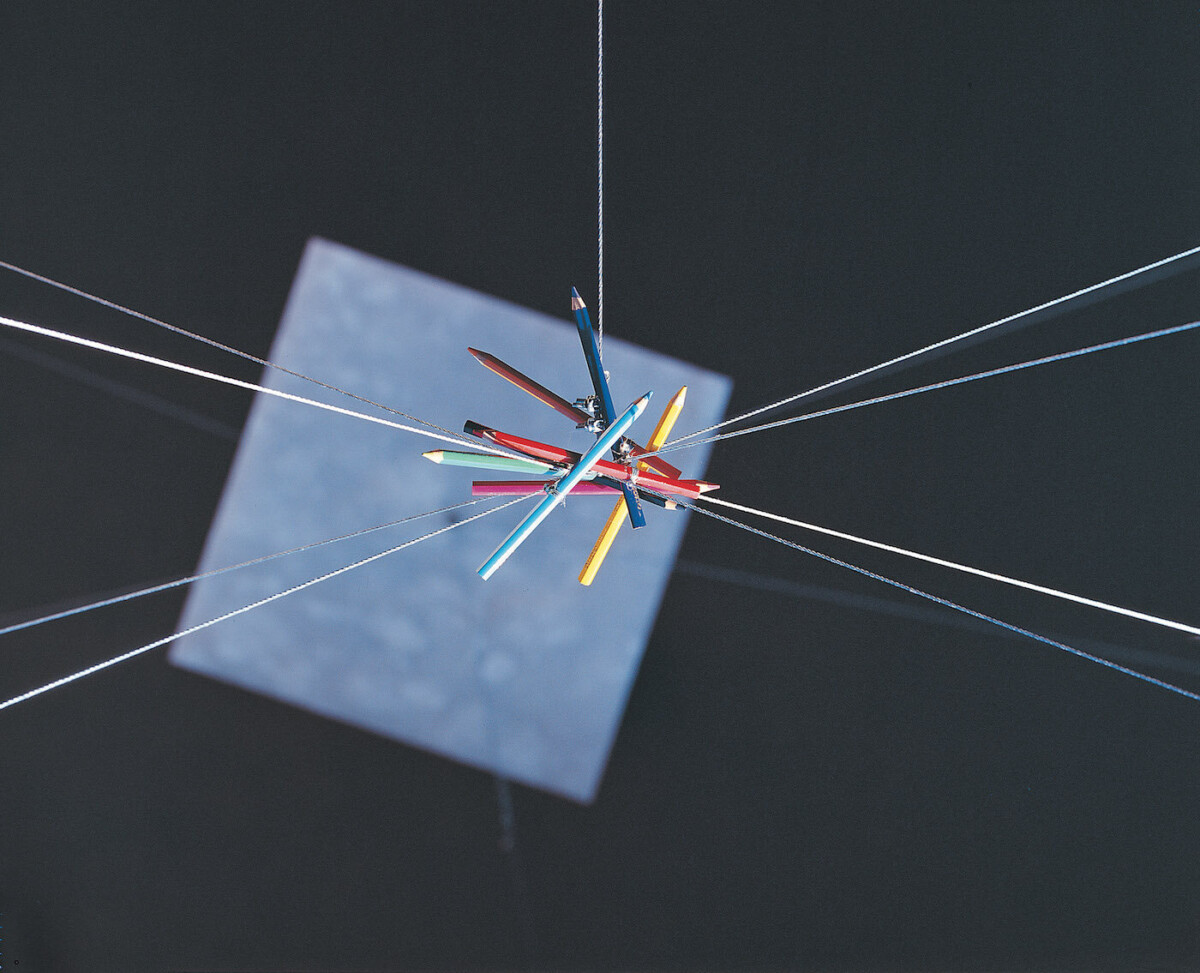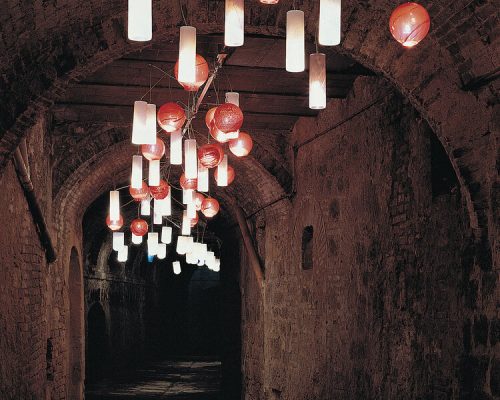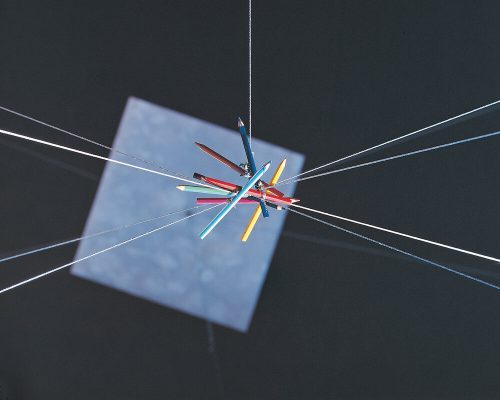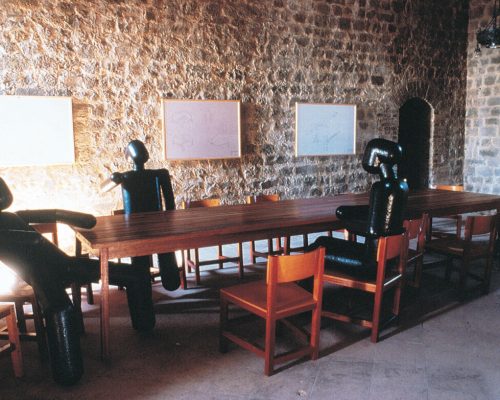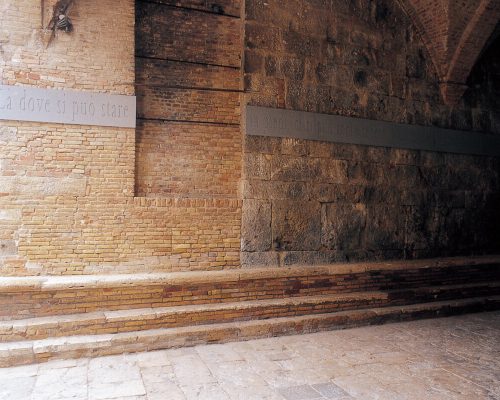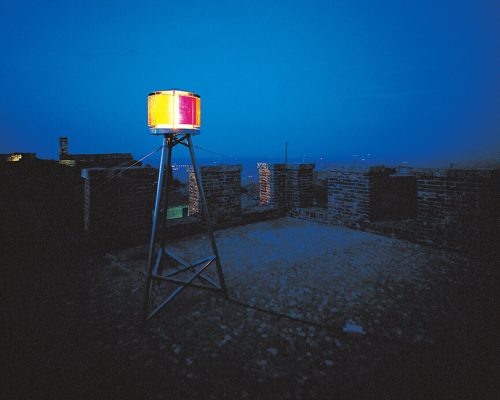The IV edition of Arte all’Arte, curated by Angela Vettese and Florian Matzner, intertwined the power of contemporary art with the charm of Tuscany’s historical sites, creating a unique journey of dialogue between creativity and landscape. Daniel Buren left his mark in Poggibonsi, while Olafur Eliasson brought his luminous poetics to Casole d’Elsa. Joseph Kosuth explored language and the concept of meaning in San Gimignano, and Atelier Van Lieshout established a visionary relationship between past and future in Montalcino. Giulio Paolini offered new perspectives in Volterra, and Tobias Rehberger transformed the spaces of Colle di Val d’Elsa into an immersive artistic experience. This edition was a journey through culture, art, and territory, renewing the deep connection between contemporaneity and tradition.
Curated by Florian Matzner and Angela Vettese
“…There is an issue that we didn’t touch upon in our conversation last year, and it seems to me to concern public art in particular.
Who is the author?
Chi la fa, l’opera, l’artista o il contesto?…”
— from a letter by Angela Vettese to Florian Matzner
“Il percorso tra “Arte Architettura Paesaggio”, intrapreso nel 1994 con Luciano Pistoi, Maurizio Rigillo e Lorenzo Fiaschi per avviare la prima Art to Art, realizzata poi nel 1996, giunge quest’anno alla sua IV edizione in parallelo con l’apertura del tema “Arte Tecnica Tecnologia Scienza”, Rinascimento-Nascimento, con le mostre Serse-Van Eyck a Gent, e Leonardo da Vinci-Panamarenko a Vinci, che porta le questioni insite in questa idea a un ulteriore livello di approfondimento.
At the heart of many initiatives carried out together over these years is certainly the relationship with the area in which we live, characterized by the interplay between “countrysides” rich in art cities and “new cities,” hubs of industrial districts that skirt or even besiege these art centers—heritage sites and cultural cradles of Western modernization. It is this very proximity, along with our passion for art, that drives us, starting from the field of visual arts, to seek the tools to create new points of balance within this clearly evident yet unconsidered polarity.
We believe it is possible—and the first steps have already been taken in this direction—to reach or move closer to a solution if artists could return to doing their craft, perhaps by revitalizing a collaboration with local artistic craftsmanship (which would, in turn, gain further knowledge and stimulation from this), as is currently happening in Colle di Val d’Elsa with crystal and yellow marble, in Poggibonsi with electrical and lighting system companies, or in Volterra with alabaster. In the meantime, we believe it is right to work seriously on every occasion, because the goal is so distant that it can only be intuited. (…)
We are convinced that this could be the moment for art to become the point of balance between the local and the global and, through seduction and personal understanding, to succeed in bringing collective languages closer together. We therefore thank all those who, together with us, believe in this and help us—starting, of course, with the artists, but not excluding anyone, while respecting the different levels of responsibility and support given (…) without forgetting those citizens who, after years of constant work, are beginning to recognize our presence and the artworks not as intrusions, but as aspects of our everyday lives to be acknowledged—and, as in Colle di Val d’Elsa and Casole d’Elsa, to be protected from potential ill-intentioned acts.
Tutto questo ci dà forza per rendere sempre più reale lo spirito di Art to Art che Luciano Pistoi qualche anno fa ci ha lasciato e che per noi, con gli altri, continua.
Mario Cristiani, da Arte all’Arte IV

